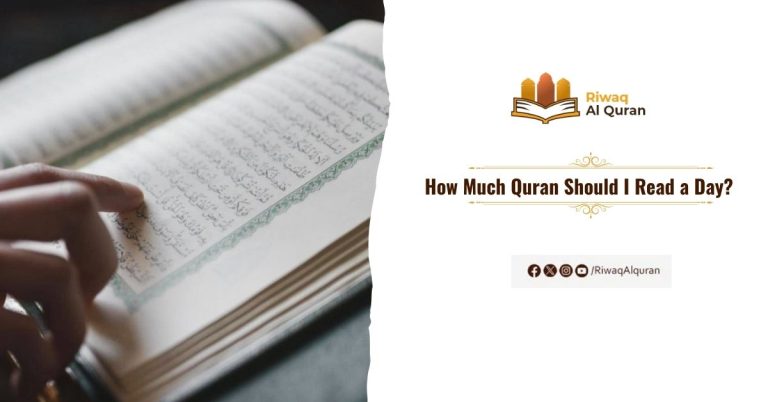What Is Qirat in Islam? All languages worldwide have different dialects and varied pronunciations based on the regions to which the speakers belong. Similar to every other language being spoken worldwide, the Arabic language that Allah picked to spread His message everywhere has different dialectical variations that happen due to the changes in intonations, tones, and geographical conditions of the speakers.
All these changes in the reading and recitation of the Quran are called Qirat. To learn its meaning, different types, and how it differs from other styles, keep reading this post!
Table of Contents
Qirat Meaning:
In our religion, the recitation of the Quran correctly is highly valued. However, there are different methods or styles of recitation, and these are known as Qirat. Let’s now learn the meaning in Arabic and the Quran.
Qirat (pl. of Qirah) in Islam refers to the various ways of reciting the Holy Quran. These are different lexical, phonetic, linguistic, morphological, and syntactical manners permitted with reciting the Quran. Each Qirah has its own certain rules of recitation and variations in words and letters. Qirat also refers to the branch of Islamic studies that deals with these recitation manners. Thus, Qirat are the verbalization of the Quran, and the Quran is preserved in Qirat.
The word Qirat (قراءات) came from the Arabic language and was derived from the term Qirah (قراءة), meaning ‘reading’. This term has been debated by various Quranic scholars in different definitions, where one describes it as the knowledge of pronouncing the verses of the Quran. It is named after the word Qari – one who recites the Holy Quran. Qirat meaning in Arabic is the reading or recitation of something. Qirat meaning in English is similar – the action of reading a piece of writing aloud from memory.
What Is Qirat in Islam?
Qirat meaning in Arabic is the action of reading something aloud. Now, what is Qirat in Islam? In Islam, there are different lexical, linguistic, phonetic, and syntactical types allowed to recite the Quran. Different types of Qirat are there with varying rules regarding the prolongation and pronunciation of words. They also differ in vowels, consonants, and less frequently completed words.
What Is Qirat in the Quran?
Here comes an important question: What is Qirat in the context of the Quran? Well, there are no different versions of the Quran but rather variations in how certain words or verses are pronounced. These variations are attributed to different reciters who received their recitations from the Prophet Muhammad or his companions. The most well-known Qirat are those of the seven Ahruf and the ten Qirat, which have been transmitted through a chain of reliable narrators.
“And [it is] a Quran which We have separated [by intervals] that you might recite it to the people over a prolonged period. And We have sent it down progressively.” (Al-Isra:106)
The History of Harf and Qirat of Quran
Well, Both Ahruf and Qirat contribute to the Quranic text’s preservation and flexibility. The 7 tribes of Ahruf address the linguistic diversity at the time of revelation. As for Qirat, it offers permissible variations in pronunciation, ensuring the accurate and beautiful recitation of the Quran across different communities and linguistic contexts within the Islamic tradition. In simpler words:
1. Ahruf:
Refers to the different linguistic forms of the Quran. It is a type of linguistic diversity introduced in the Quran to accommodate the diverse pronunciations among Arab tribes in ancient times.
2. Qirat:
Refers to the permissible ways of reciting the Quran, considering diversity in pronunciation and dialects among Muslim communities.
Essentially, the purpose of this diversity is to facilitate understanding and recitation of the Quran for various people. However, the Ahruf of the Quran and Qirat do not change the core meaning of the Quranic text. They deal with different aspects of recitation and language, but there is no alteration in the main meanings of the words or sentences.
What Is Ahruf and Qirat?
The Holy Quran was revealed to Allah’s Apostle (PBUH) by angel Jibril (AS) in seven ahruf. Ahruf (sing. harf) are translated in different terms like modes, styles, ways, and editions. Now what is Qirat in Islam? Ahruf are the 7 styles of Quran recitation, which are distinct from the ten qirat. Qirat are based on only one harf in which the Quran was revealed. Also, some of the diversity of the ahruf lived on in the qirat.
However, the identification of the ahruf with the qirat has not been accepted by Muslim scholars. According to the medieval Quranic scholar Ibn al-Jazari, the rejection of the idea is the point of agreement among subject experts. On the other hand, Christopher Melchert mentioned that it is contrary to reason, as well as unsupported by Islamic traditions.
Other experts who opposed this thought are Al-Qurtubi and Al-Suyuti, where the latter has cited many other scholarly authorities against the view. According to Ibn al-Jazari, one group of scholars held that Uthman preserved each harf. Another group held that Uthman preserved only a single harf to unify the Muslim ummah under it. Lastly, he held what he said was the majority view, which is that orthography of the copies by Uthman accommodated many ahruf. There is some difference in views on the extent to which the ahruf showed the different dialects of the Arab people or differences in their real words.
Types of Qirat in Islam
The types of Qirat in the Quran represent diverse recitation styles that stem from historical and linguistic variations in Arabic. These variations emerged due to different dialects, linguistic nuances, and contexts of revelation during Prophet Muhammad’s time. Despite these differences, all Qira’at maintain the Quran’s original meaning and are considered valid within Islamic tradition.
The ten recognized Qirat styles offer unique pronunciations, rhythms, and melodies, each associated with specific regions and communities. Differentiating between Qirat involves recognizing variations in phonetics, Tajweed rules, and word endings. While appreciating this diversity, the primary aim remains to accurately convey the Quran’s message.
Difference Between Tajweed and Qirat
Tajweed and Qirat are two terms related to the recitation of the Quran in Islam. Still, they refer to different aspects of the process.
1. Tajweed:
Refers to the rules and principles of proper pronunciation and articulation when reciting the Quran. It involves the correct pronunciation of each letter, proper elongation or shortening of vowels, and other rules that enhance the beauty and clarity of the recitation. The primary goal of Tajweed is to ensure the accurate and beautiful recitation of the Quran, following the rules laid down by classical Arabic grammar.
“Those to whom We have given the Book read it as it ought to be read. They [are the ones who] believe in it. And whoever disbelieves in it – it is they who are the losers.” (Al-Baqarah:121)
Riwaq Al Quran offers you a special Online Tajweed Course that aims to teach you the rules of Tajweed theoretically and practically from the Quran.
2. Qirat:
Refers to the various ways or styles of reciting the Quran. It encompasses the different recitations and modes that have been transmitted through a chain of narrators from the Prophet Muhammad and his companions. The purpose of Qirat is not just about correct pronunciation but also involves understanding the different permissible ways the Quran can be recited without changing the meaning.
In summary, Tajweed focuses on the proper pronunciation and articulation of the Quranic text, while Qirat encompasses the various authorized ways of reciting the Quran, including different recitations transmitted through reliable chains of narration.
Why Are There Different Styles of Qirat?
There are many reasons why Qirat exist in the Islamic faith. We got you some of these reasons to name just a few as follows:
1. Preservation of the Divine Message:
The Quran is the literal word of Allah as revealed to Prophet Muhammad (peace be upon him). Qirat, or the correct recitation of the Quran, is seen as a means of preserving the divine message in its original form. This meticulous preservation ensures that the Quran is transmitted accurately from generation to generation.
2. Spiritual Practice:
Reciting the Quran is a fundamental act of worship in our religion. When we recite the words of Allah, it connects us with Him, strengthens our faith, and brings about spiritual benefits. The beauty and rhythm of the Qirat add to the spiritual experience for those who recite and listen to it.
3. Correct Transmission of Laws and Guidance:
The Quran serves as a comprehensive guide for the personal, social, and legal aspects of a Muslim’s life. Accurate Qirat is crucial to ensure that the laws, commandments, and guidance contained in the Quran are transmitted correctly. It helps prevent misinterpretation and preserves the intended meaning of the verses.
4. Oral Tradition:
Historically, the Quran was passed down through oral transmission before being compiled into a written form. The Qirat played a central role in this oral tradition, ensuring that each word, pronunciation, and intonation was accurately transmitted from one generation to the next.
5. Cultural and Linguistic Beauty:
The Qirat of the Quran is often admired for its linguistic beauty and rhythmic patterns. This aesthetic aspect adds to the reverence with which the Quran is held in the hearts of believers. The recitation is not merely about conveying information but also about experiencing the profound beauty of the language.
In summary, the Qirat of the Quran exists to preserve the divine message, facilitate spiritual practice, ensure the correct transmission of laws and guidance, uphold the oral tradition, and appreciate the cultural and linguistic beauty of the Quranic verses. It is a crucial aspect of Islamic worship and cultural heritage.
Read: How to Learn Qirat of Quran Properly?
What Is the Most Popular Quran Qirat?
The popularity of Qirat styles can vary across different regions and communities. However, two of the most widely recognized and popular Qirat styles are Hafs and Warsh.
1. Hafs ‘An Asim:
Hafs is the most widely used and accepted Qirat style among Muslims worldwide. It is particularly prevalent in Arab countries and is the most common Qirat style for reciting the Quran in many parts of the world.
2. Warsh ‘An Nafi’:
Warsh is another popular Qirat style, especially in North and West Africa. It is commonly used in countries like Morocco, Algeria, Tunisia, and parts of West Africa. Warsh is known for its differences in pronunciation and certain variations in the text compared to Hafs.
While Hafs and Warsh are among the most popular, it’s important to understand that preferences can vary among communities and regions, and people may choose to recite the Quran in the Qirat that is traditional or commonly practiced in their area.
Read more about: What Is Warsh Tajweed And Top Warsh Tajweed Rules To Learn?
Is One Style of Qirat Better or More Authentic Than the Others?
All of the ten recognized Qirat styles are considered valid and authentic within the Islamic tradition. Each one has a valid chain of transmission (Sanad) tracing back to the Prophet Muhammad through a series of reliable narrators. As mentioned before, the differences in the Qirat styles are essentially variations in pronunciation and recitation, and they are not considered to affect the meaning of the Quran.
Learn Qirat Online with Riwaq Al Quran!
Riwaq Al Quran provides an essential online learning opportunity for Muslims worldwide with its Learn Ten Qirat Online Course. Designed for individuals residing in both Muslim and non-Muslim countries, the course is facilitated by experienced and professional Quran tutors.
Our main focus is to help students grasp the intricacies of the ten different Qirat and Ahruf, ensuring a comprehensive understanding of Quranic recitation. Join us now to enhance your knowledge of Qirat and deepen your connection with the Quran.
Here are a sample of our set of Quran Courses that will be helpful for you:
- Online Tafseer Course: Delve into Quranic meanings with our insightful online Tafseer course.
- Noorani Qaida Online: Learn Quranic basics efficiently through our Noorani Qaida online program.
- Online Quran Recitation Course: Enhance Quranic recitation skills through our expert-led online course.
- Online Tajweed Classes: Master Tajweed rules for beautiful Quranic recitation in online classes.
- Quran Memorization Online Course: Memorize the Quran effectively with our specialized online memorization course.
- Online Quran Classes for Kids: Nurture a love for the Quran in kids through interactive online classes.
Conclusion:
In conclusion, Qirat in Islam refers to the diverse recitation styles of the Quran, stemming from historical and linguistic variations in Arabic. These variations, represented by the ten recognized Qirat styles, maintain the Quran’s original meaning and are considered valid within Islamic tradition.
The existence of different Qirat styles serves multiple purposes, including preserving the divine message, facilitating spiritual practice, ensuring the correct transmission of laws and guidance, upholding the oral tradition, and appreciating the cultural and linguistic beauty of the Quranic verses.
While preferences for certain Qirat styles may vary among communities and regions, all ten styles are considered authentic and equally valid. Enrolling in online courses, such as Riwaq Al Quran’s Learn Ten Qirat Online Course, offers an opportunity to deepen one’s understanding and connection with the diverse recitation styles of the Quran.


































